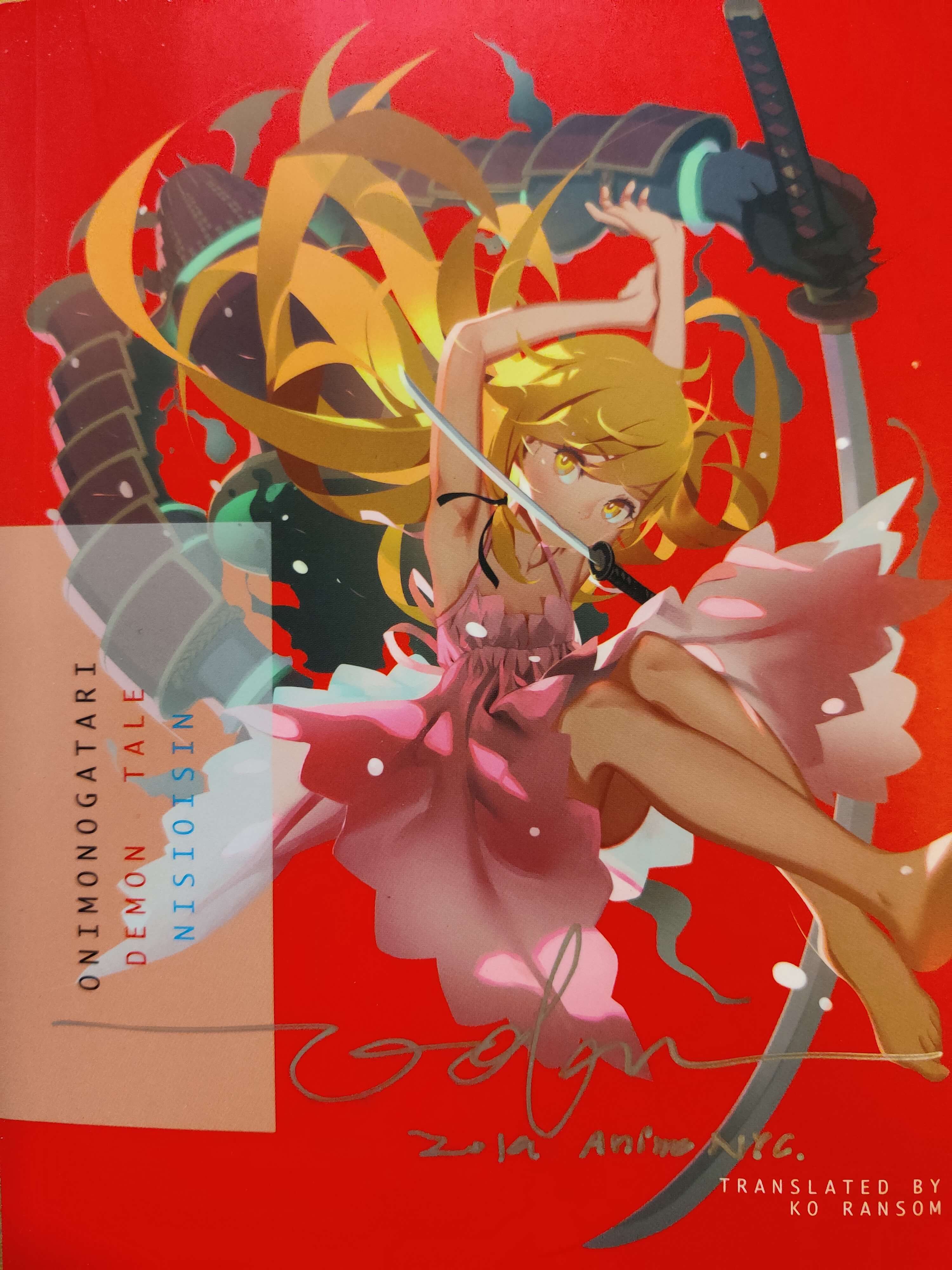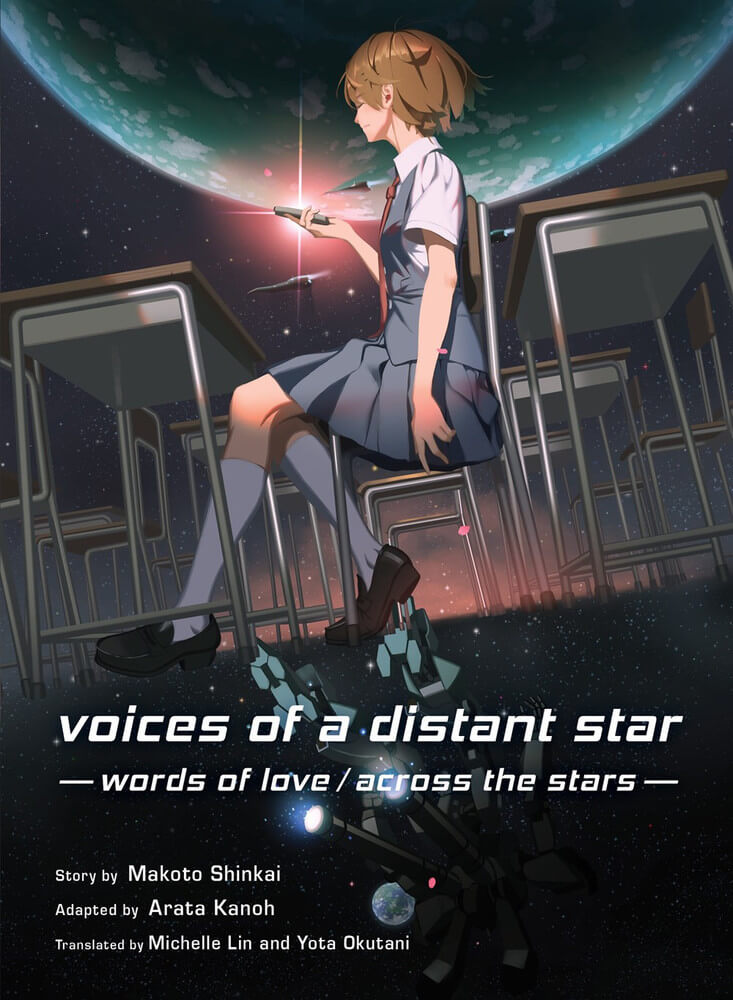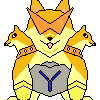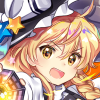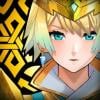Anime NYC: Monogatari Illustrator VOFAN Interview!
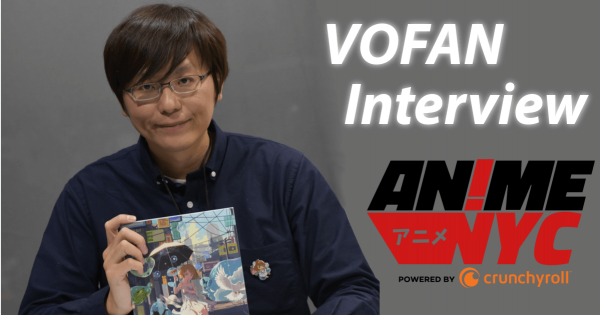
At Anime NYC, GamePress had the opportunity to sit down with Illustrator VOFAN, of Monogatari fame. We get to chat about all kinds of topics, from his work on Monogatari, to inspirations and thoughts on the genre, and more!

Colorful Dreams
In your book Colorful Dreams, you mentioned that you were a fan of Yuzo Takada's work and YuYu Hakusho in your youth. What in particular about the series was so compelling to you?
VOFAN: Well, since I was a kid I've always liked reading Japanese Manga. And you know when you're a kid, how you tend to copy and learn what you see? Since I was 13-14, I was influenced by YuYu Hakusho and would try to imitate the characters and artstyle.
As I got older, like around college age, when I'd see something I like, I'd try to capture the essence of the art and character instead of the style itself.
As you just mentioned, your 2006 Collection Colorful Dreams finally got released here in America last month. You pulled some real experiences from your life in Taiwan to make those short stories, but which one would you say was the most personal to you?
VOFAN: My favorite is the story Cafe. (The one with two monsters?) Yes. So there's a coffee shop I really like in Jiufen (九份), a city in Taiwan. I didn't try to draw any famous landmarks people would recognize like the Taipei 101, but instead I tried to replicate the eerie, almost creepy atmosphere, especially after dark.
Actually, the story heavily features traditional Taiwanese elements - they're not monsters, but spirits Taiwanese people believe to be gods. The story is basically how they go to your shop and drink coffee, but don't pay in cash. Instead, they pay in good luck.
Since Colorful Dreams is the first of your artbooks brought to the US, were there any challenges in bringing the book here?
VOFAN: At first, Colorful Dreams just needed a designer to redo the text and layout for an American audience. But afterwards, I felt the character designs were too old, and that I needed to adjust their colors and such. After updating them, I noticed that if I just updated the characters but not the background, it ended up looking like a collage. The result was disappointing, so I went back and redrew everything instead.
The most difficult part was actually my editor, who tried to stop me from redrawing everything. To be fair, it would've taken over half an year and delayed things further [laughs].
After talking about how you touched up and redrew a lot of Colorful Dreams, do you have any plans for a follow up art collection with your newer perspective compared to your younger self? (You're giving him ideas! - Translator)
VOFAN: Drawing Colorful Dreams was my debut art - kind of like a boy's first love: very naive and pure, simple, feelings. Now that I'm married and have three children, drawing things is a bit different. Theme-wise, things are much darker now [laughs]. (I think he's joking - Translator)
If there's a next part, from my current perspective it'd be darker, bloodier, even nightmarish. (I still think he's joking - Translator).
NisiOisiN and the Monogatari series
What were your thoughts when you were first assigned to cover the Monogatari Series? Did you know about NisiOisiN?
VOFAN: So I'm actually a pretty big fan of Anime and Manga. Before working with him, I had read one of his earlier works, Zaregoto: The Kubikiri (Decapitation) Cycle.
Do you have any notes on the character design process? Or any specifics that you like to talk about?
VOFAN: There are notes from the Japanese publishers as to which character they want on the cover, but they don't give me much direction on what this person should be doing or what the background should be. So that's a decision that's made between the editors in Taiwan and me.
In the Monogatari series with a strong female cast, surprisingly the best girl is Kaiki*. We heard you used to mainly draw male characters, and wonder about the evolution of the characters you draw until now - can we look forward to more Kaikis in the future?
(Note, this was not a question from GamePress and does not reflect GamePress' nor the author's opinions. Although Kaiki is a top tier character, best girl is a subjective and difficult subject that will require pages of debate quoting from the original Japanese text when the answer is obviously Hanekawa.)
VOFAN: Like most boys, growing up I was into things like robots and monsters, as well as drawing the popular hot-blooded shounen characters. In my teenage years and on, I started liking cute girls. I feel like even when I get older, 80, 90, even at 100, I will still continue liking cute girls.
In a previous interview you mentioned your favorite character is Shinobu. Would you care to explain about your thought process behind illustrating the cover for Onimonogatari?
VOFAN: At first, Shinobu was a more reserved, brooding, and moody character, eventually opening up to Araragi and becoming more lively and animated. When I'm illustrating the covers, I try to take into account not only the stories themselves, but also the evolution of the character as well.
Speaking of evolution, how would you describe the evolution of your artstyle over the years? Aside from liking [drawing] guys to liking [drawing] girls?
VOFAN: I feel like that phrasing can easily be misunderstood. [Everyone laughs].
I think there's two major parts of my art that changed over the years. The first is the involvement of story elements, and the second is paying more attention to light and shadows. Both of these are integral to photography, so it's fair to say that photography really influenced my art.
Out of all the characters that you've designed for the Monogatari franchise, who are you the most proud of bringing to life?
VOFAN: Shinobu. And… Hachikuji. And… Nadeko. Yeah, these three, as far as design goes.
Aside from Monogatari, I believe you've also illustrated Okitegami Kyouko (Boukyaku Tantei)? What are your thoughts on working on a different series from NisiOisiN?
VOFAN: From the start, NisiOisin had a different main character and demographic in mind. He wished for it to appeal to everyone, something that even women would find enjoyable. When illustrating Okitegami Kyouko, I kept NisiOisiN's goals in mind. I focused more on the fashion aspect, and tried to give it a warmer feel, as opposed to Monogatari, which has a more male-oriented audience.
Following up, what were your reactions to Okitegami Kyouko?
VOFAN: I have a lot of respect for NisiOisiN for being able to write so many different styles of writing. Sometimes I even wonder if it's a studio and not just one person [laughs]. But I have met him before, so I do know he's one person.
Has your visual interpretation of a character ever been involved in the character's portrayal and development?
VOFAN: This is pretty common in light novels, this mutual influence. When the author writes the story, sometimes they don't have a crystal clear design for the character. Once the illustrator draws the character, sometimes the author goes, "Ah!" and can write the more concrete character details into the story, which in turn influences the illustrator again.
For example, if the author doesn't specify a character's hairstyle, and the illustrator draws her with short hair, if the author then writes the character as being long haired then it's kind of like an open disagreement with the illustrator. This is why we have a feedback loop like this.
Since there are so many adaptations of Monogatari now like anime and manga, what are your thoughts on all the different renditions of the characters you drew?
VOFAN: Every rendition has its own charm to it, just like how different artists will add their own inspirations. I think they're all great!
I try to avoid being influenced too much by their style, but if I see something they did really well, I'll usually try to learn from it and use it for my own work.
So I like to ask artists about the "Three Character Island." If you could choose three characters you've illustrated to be at your side to keep you sane and safe before your rescue, which three would you choose, and why?
VOFAN: [3 seconds of thought.] Shinobu. Yeah, Shinobu as an adult, Shinobu as a teen, and Shinobu as a child. All versions of Shinobu. Shinobu is always useful.
So… Did you request the Shinobu cosplayer for your booth?
VOFAN: I actually didn't know - I didn't put in any special requests or anything like that. It's either a coincidence or Vertical decided to ask someone to cosplay as Shinobu.
Lin-san (Editor): It was definitely arranged [laughs]. So we have a longtime partnership with Kodansha, and they have often hired professional cosplayers before with requests. So it was supposed to be a surprise for VOFAN.
Photography
In the past you have said that you have more confidence in your photography than in your art, but we couldn't find any photographic books or exhibitions by you. Is this something you have considered?
VOFAN: I have actually taken photography jobs for interior pictures of rooms. So I do have a self-published book of my photography.
Do you see photography and illustrations as separate? Are there times when you come across a scene and want to draw it instead of reaching for your camera?
VOFAN: To me, the emphasis of photography is its realism, while illustration is drawing out my ideas. If I'm taking a photograph, I want to capture the reality of the scene. If I'm drawing, I'm projecting something from my imagination. That is the separation between photography and illustrations to me.
Tools of the Trade
As someone who has long shared his artwork online, do you think social media has become an important tool for artists?
VOFAN: Right now, I do agree that putting works on SNS (Social Networking Sites) is indispensable for creators and artists, but I also try not to spend too much time on it. If you stay on it too long, then it will start to affect your art style or what you produce. So I only go on when I have time to take a break after work.
Which social media do you use the most?
VOFAN: I tend to use Facebook and Twitter.
To portray the emotions of characters, you mentioned listening to music to set the mood. Do you have some favorite artists or soundtracks you listen to frequently or go to specifically?
VOFAN: Typically I like listening to more light and upbeat music. But not the kind that makes you feel sleepy, for obvious reasons [laughs]. Usually I'll listen to a Spotify station, or put on popular songs in Taiwan.
I'll also try to keep the music at about the same energy and genre. If there's a song that suddenly gets fast or a hard shift in style, then it gets distracting. So even and consistent music, like Jazz. Not so much a specific artist, though.
Just a technical question, what tools do you use for your illustrations?
VOFAN: Tablet and computer. As for software, I like using Clip Studio Paint, and adjusting the colors in Photoshop and giving it a blurred feeling. That's where the dreaminess comes from.
Background and Inspirations
You've cited Makoto Shinkai as a major inspiration for the rendering of light in your illustrations. So I was curious, which of Shinkai's films has resonated with you most as an artist?
VOFAN: The biggest influence on me was his earlier films, like Hoshi no Koe (Voices of a Distant Star). That one really moved me. Although the art isn't as beautiful as his more recent works, it was really effective at portraying the atmosphere. The characters were also not as mature, but the entire work is still extremely moving.
I wanted to add that it's not that he needed to draw them especially delicate or cute, but the art really channeled all the emotion Shinkai wanted to portray. Their expressions on the characters left a lasting impression on me. Of course, the most important thing is still cute girls.
Was Vertical aware of this when they asked you to draw the cover for Voice of a Distant Star?
VOFAN: I've collaborated with Vertical often, and I remember mentioning that I'm a fan of Mr. Shinkai to them.
Lin-san (Editor): Actually, we didn't know at all. In fact, they were scared to death after finding out after the fact that it was a complete coincidence.
VOFAN: So I thought Vertical knew, but now I know that they didn't as of now. [Laughs]. We're both shocked. I'm very thankful for this opportunity.
Lin-san: Vertical likes to use original ideas and artwork for their covers, so they thought it would be a good idea to try the combination of Makoto Shinkai and VOFAN. So when they asked VOFAN, he was really happy about it and immediately took the job. So that was a complete coincidence - a miracle.
As someone with an architectural background, how do you think it has affected your artwork?
VOFAN: There are two things. The first is learning how to pull all-nighters, or at least working late into the night. The next thing is getting the feel for space. Being an architecture major helps me visualize perspective.
I. Given your use of architectural techniques in your illustrations, do you think you would be different as an artist today if you didn't study architecture at all?
VOFAN: As an architectural student I actually wasn't all that great a student, so I feel like it wasn't particularly impactful. Photography actually had a larger influence on my work.
Since the landscape of art technology is changing so quickly, do you find yourself under pressure to continually improve as an artist?
VOFAN: I feel like I'm always learning new things. No matter if it's new technology or new styles that become popular, I'll always carefully look into them. However, I want to make sure I keep the integrity of my own style, so I'll also observe them and slowly adjust my techniques.
This might be a hard question, but what is the weirdest thing you have ever drawn?
VOFAN: An extremely muscular man. You haven't seen it for sure [laughs].
What is the origin of the name "VOFAN"?
VOFAN: It's actually from a video game. The game's name started with "VO", and I am a fan, so my name became, "VOFAN".
Has there been any manga or anime that has really captured your imagination recently?
VOFAN: For anime, I really enjoyed Gurren Lagann. I also really enjoy Satoshi Kon's works.
Is there a specific genre of manga/light novels you haven't illustrated for that you would love to illustrate?
VOFAN: I really like those dark murder mysteries. I really like illustrating horror stories because it's such a different tone from my normal work that I get to stretch my abilities.
From Colorful Dreams to now, we've seen your artstyle develop over the years. How have you been able to keep developing and evolving your style?
VOFAN: Just keep on learning. You should try to be like a sponge, and always be on the lookout for new knowledge and absorb what you see. After finishing every piece I'll always be very critical. I'll look at other works and think about what works and what is working. I just going back and forth between recognizing what to keep and what to improve.
Thoughts on New York
How has your time been in New York City so far? It's your first visit here, right?
VOFAN: I really like the juxtaposition between the old and new architectural structures. Here you have these buildings from so long ago, but right next to it, you have these really modern buildings. This kind of contrast really inspires my creativity.
Is there anywhere in New York you would like to go and take photos?
VOFAN: So I actually need your help on this - I like to go and take photos of abandoned places. Ruins, warehouses, etc. But tourism guides don't really tell you about these.
Ah, so places like Detroit, the Bronx… There's a place called TOMO - we can get the address to you.
VOFAN: I'm actually very scared of getting arrested by the police in the US. So in Taiwan I've been stopped before by police a few times, but Taiwanese police are pretty friendly, so they'll chat with me a bit before letting me continue shooting photography. In my book there's a story of me travelling these back alleys, taking pictures of things people have abandoned.
Is this your first American convention?
VOFAN: It is my third. The first was in Seattle, the second at Anime Central, and now, Anime NYC.
Here at Anime NYC you're surrounded by people of various backgrounds and upbringings united by their love of manga, anime, and light novels. What have you taken from this experience here at Anime NYC and how would it maybe influence your future works?
VOFAN: My big takeaway from these events is that with this diversity of people, everyone brings their own viewpoints and ideas on artwork. It'll be different from other parts of Asia, or Taiwan. It really makes me realize how so many people can have so many interpretations of the same thing.
Just like how someone mentioned how they thought the two gods were monsters. That interpretation was really interesting to me. In Taiwan, most people would recognize the gods, one taller and one shorter. But of course, culturally, people in America would have no idea of that. So it's really cool to see how people view and interpret my art.
Thoughts on Taiwan
Aside from the ones you've touched on, are there any more places in Taiwan that have had an influence on your art that you would like to share with us?
VOFAN: Since I'm from Tainan, I've always wanted to draw the scenery there. I think that the place you grow up in, that you're closest to, you actually pay the least attention. It's kind of like how a lot of New Yorkers haven't been to Broadway to see musicals. It's really a shame; I'd love to go back and take a good look around Tainan and draw it.
If you were to personify bubble tea, how would you draw it?
VOFAN: Very fragrant, soft, and chewy-looking.
What is the one place in Taiwan that all people should visit, and why?
VOFAN: I really like the east side of Taiwan - Yilan, Hualien, and Taitung, these three prefectures. I highly recommend it due to the beautiful scenery. The transportation there isn't as fast paced or convenient, so there's a sort of charm to being a bit separated, like a different world.
Most tourists who visit just stay in Taipei, and I think they're missing out. They should come and check out the east coast of Taiwan!
Ending Remarks
What works can we expect from you in the future?
VOFAN: Well, the whole redrawing of Colorful Dreams has put me in a pretty productive mood. There's two things I'd like to work on: the suggestion from earlier about the companion piece to Colorful Dreams, and the second one is if the Monogatari series decides to have an artbook, I'll definitely look forward to that.
Thank you for taking the time to speak with us, it's been a pleasure.
VOFAN: I really liked your questions - they were thoughtful and I enjoyed answering them.


